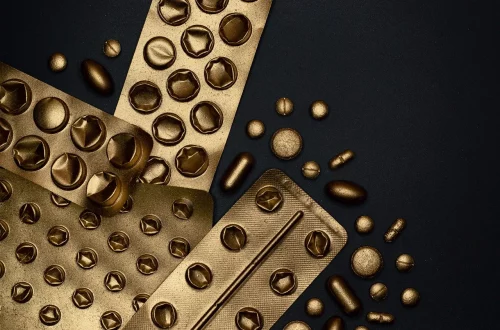
Find a Spanish-speaking Dermatologist Near You Today
Finding a dermatologist who speaks your language and understands your cultural background can significantly impact your comfort and the quality of care you receive. The skin is the body’s largest organ, and it is essential to maintain its health through proper medical care. For Spanish speakers, the challenge often lies in finding a qualified dermatologist who can communicate effectively in Spanish. This can be particularly important for individuals who may not be fully comfortable discussing their health issues in English.
Language barriers can lead to misunderstandings, which may affect diagnosis and treatment. Having a dermatologist who speaks Spanish can facilitate a more open dialogue, allowing for better symptom descriptions, clearer explanations of treatment options, and increased patient satisfaction. Understanding cultural nuances is also vital, as it can influence how patients perceive their skin conditions and the treatment recommended.
As the demand for bilingual healthcare providers increases, many dermatologists are stepping up to meet this need. Whether you’re dealing with acne, eczema, psoriasis, or skin cancer concerns, finding a Spanish-speaking dermatologist can enhance the overall experience. It’s never been easier to locate a qualified professional who can provide the care you need in your preferred language.
Importance of Finding a Dermatologist Who Speaks Your Language
When it comes to healthcare, communication is key. A dermatologist who speaks your primary language can make a world of difference in the quality of care you receive. The ability to communicate effectively can lead to better patient outcomes because it allows for clearer discussions about symptoms, treatment options, and follow-up care.
For many patients, discussing sensitive topics related to skin health can be daunting, especially if they must do so in a language that is not their first. Miscommunication can lead to misunderstandings about diagnoses or treatment plans, ultimately affecting the patient’s health. When patients can express their concerns and ask questions in their native language, they are more likely to feel comfortable and understood, fostering a stronger patient-provider relationship.
Moreover, cultural competency plays a significant role in healthcare. A Spanish-speaking dermatologist is likely to have a better understanding of cultural attitudes towards skin health, which can influence treatment decisions. For instance, some Hispanic cultures may have specific beliefs regarding sun exposure, skincare practices, or the significance of certain skin conditions. A dermatologist who is aware of and respects these cultural differences can provide more personalized care.
Another important aspect to consider is the emotional well-being of the patient. Skin conditions often carry psychological implications, such as low self-esteem or anxiety. When patients feel understood and supported, they are more likely to adhere to treatment plans and follow up on their care. This can lead to improved health outcomes and higher satisfaction with the overall healthcare experience.
In conclusion, finding a dermatologist who speaks your language is not merely a matter of convenience; it is essential for effective communication, cultural understanding, and overall patient satisfaction. With the growing number of bilingual healthcare providers, patients have greater opportunities to receive the care they deserve.
How to Locate a Spanish-Speaking Dermatologist
Locating a Spanish-speaking dermatologist in your area can seem overwhelming, but there are several strategies you can employ to make the process easier. The first step is to utilize online resources. Many healthcare websites offer search functions that allow you to filter for providers based on language proficiency. Websites such as Healthgrades, Zocdoc, or the American Academy of Dermatology have search tools that can help you find dermatologists who speak Spanish.
Another effective method is to consult your local community health center or clinic. These facilities often have multilingual staff and can point you in the direction of qualified dermatologists in your area. They may also provide additional services that cater specifically to the Hispanic community, ensuring a culturally sensitive approach to care.
You can also ask for recommendations from friends, family, or coworkers. Personal experiences can be incredibly valuable, as they provide insights into the level of care and communication you can expect. If you are part of a local Hispanic community group or organization, consider reaching out to them for referrals as well.
Additionally, when you find a potential dermatologist, don’t hesitate to call their office directly. Inquire about the services they offer and whether they have Spanish-speaking staff available. A friendly and informative response can be a good indicator of the level of care you can expect.
Another option is to check with your health insurance provider. Many insurance companies have online directories that allow you to search for covered specialists by language. This can save you time and ensure that you are considering dermatologists who are within your insurance network.
In summary, finding a Spanish-speaking dermatologist involves utilizing online resources, seeking recommendations, and directly contacting potential providers. By taking these steps, you can ensure that you find a dermatologist who meets your language needs and provides the quality care you deserve.
Questions to Ask Your Dermatologist
When you finally schedule an appointment with a Spanish-speaking dermatologist, it’s essential to come prepared with questions. This not only helps you understand your skin condition better but also establishes a productive dialogue with your healthcare provider.
Start with questions related to your specific skin concerns. Ask about the nature of your condition, what causes it, and the best treatment options available. This is particularly important for chronic skin issues that may require long-term management. Understanding the available treatments can empower you to make informed decisions about your health.
Inquire about any lifestyle changes that could improve your skin health. For example, questions about diet, sun protection, or skincare routines can provide valuable insights. A good dermatologist will be happy to offer personalized advice tailored to your unique situation.
It’s also wise to discuss the potential side effects of any medications or treatments recommended. Understanding the benefits and risks can help you weigh your options and decide what is best for you.
Don’t hesitate to ask about follow-up appointments and what to expect during the treatment process. Clarifying how to monitor your condition and when to seek additional care can lead to proactive management of your skin health.
Finally, consider discussing any concerns you have about the treatment’s cost and insurance coverage. A transparent conversation about finances can help alleviate stress and ensure that you can follow through with the recommended care.
In conclusion, preparing a list of questions can enhance your visit to the dermatologist. This proactive approach ensures that you receive comprehensive care and understand your treatment options fully.
**Disclaimer:** This article is for informational purposes only and does not constitute medical advice. Always consult with a qualified healthcare professional for any health concerns or questions regarding medical treatments.




